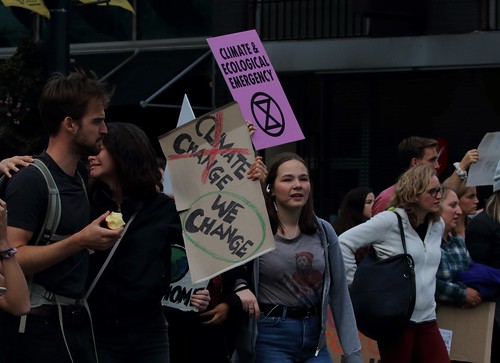3 minutes estimated reading time
I started thinking about climate despair last month as I was researching my post on psychotherapy + culture.
Depth of climate despair
The driver was a research report that appeared in The Lancet in December 2021. Researchers surveyed 10,000 respondents aged between 16 – 25, in ten countries across the Asia Pacific region, North and South America, Europe and Africa. The respondents were drawn from Kantar’s LifePoints online research panel. Of those who started the survey less than 70 percent completed it. The gender split was slightly overweight towards males: 51·4% male, 48·6% female.
The survey was developed by 11 international consultants with expertise in climate change emotions, clinical and environmental psychology, psychotherapy, psychiatry, human rights law, child and adolescent mental health, and young people with lived experience of climate anxiety. Which means that there was an incentive to come out with the findings they received and that may have biased the results. But the indications are clear in terms of direction around climate despair.
Key datapoints supporting the sense of climate despair amongst respondents:
- Survey respondents across all countries were worried about climate change (59% were very or extremely worried and 84% were at least moderately worried)
- Over half of those surveyed reported each of the following emotions: sad, anxious, angry, powerless, helpless or guilty
- 75% of those surveyed said that they think the future is frightening
The report says:
Distress about climate change is associated with young people perceiving that they have no future, that humanity is doomed, and that governments are failing to respond adequately, and with feelings of betrayal and abandonment by governments and adults. Climate change and government inaction are chronic stressors that could have considerable, long-lasting, and incremental negative implications for the mental health of children and young people.
Hickman, C.,Marks, E., Pihkala, P., Clayton, S., Lewandowski, R.E. & Mayall, E.E. (December 2021) Climate anxiety in children and young people and their beliefs about government responses to climate change: a global survey. (UK) The Lancet Planetary Health
The article then goes on to hold governments accountable for a moral harm on the young people. However, a good deal of the moral harm is also due to the way companies and NGOs actually talk about climate change.
Anecdotal evidence from therapists interviewed by the New York Times suggests that climate despair tends to be more prevalent in young female patients that they see. However, this might be down to a young men being less likely to see a therapist than a young woman.
Positive reinforcement
This video from WARC features research why it is ineffective to play into the constant environment doom loop if we want action. A change in approach should start to combat the deeply entrenched feeling of climate despair.
WARC highlighted research that positive environmental images motivate people to take action. The research paper in the Journal of Advertising Research is Are consumers moved by a crying tree or a smiling forest? Effects of anthropomorphic valence and cause acuteness in green advertising written by three Taiwanese researchers based on a number of studies, each with 35 – 50 participants.
Research key findings
The paper had four key findings:
- When the environmental issue is considered a sudden disaster, negative anthropomorphism is more persuasive.
- By contrast, when the environmental issue is viewed as an ongoing tragedy, positive anthropomorphism results in a more favourable attitude, higher willingness to pay, and more money being donated.
- Consumers’ connectedness to nature serves as the underlying mechanism in this messaging. If this level of connectedness to nature is low, nonprofit organizations and companies must alter these perceptions by choosing a more appropriate anthropomorphic valence and cause acuteness in their green advertising.
All of which seems to point to a possible challenge amongst both NGOs and companies over their inability to discern the difference between important and the most urgent elements. If collectively they can’t understand the categorisation, it’s no wonder that a significant minority of their audience slips into climate despair and is discouraged from taking a more active role.
Secondly, working on consumer’s connectedness to nature is a major communications JTBD (job to be done).
